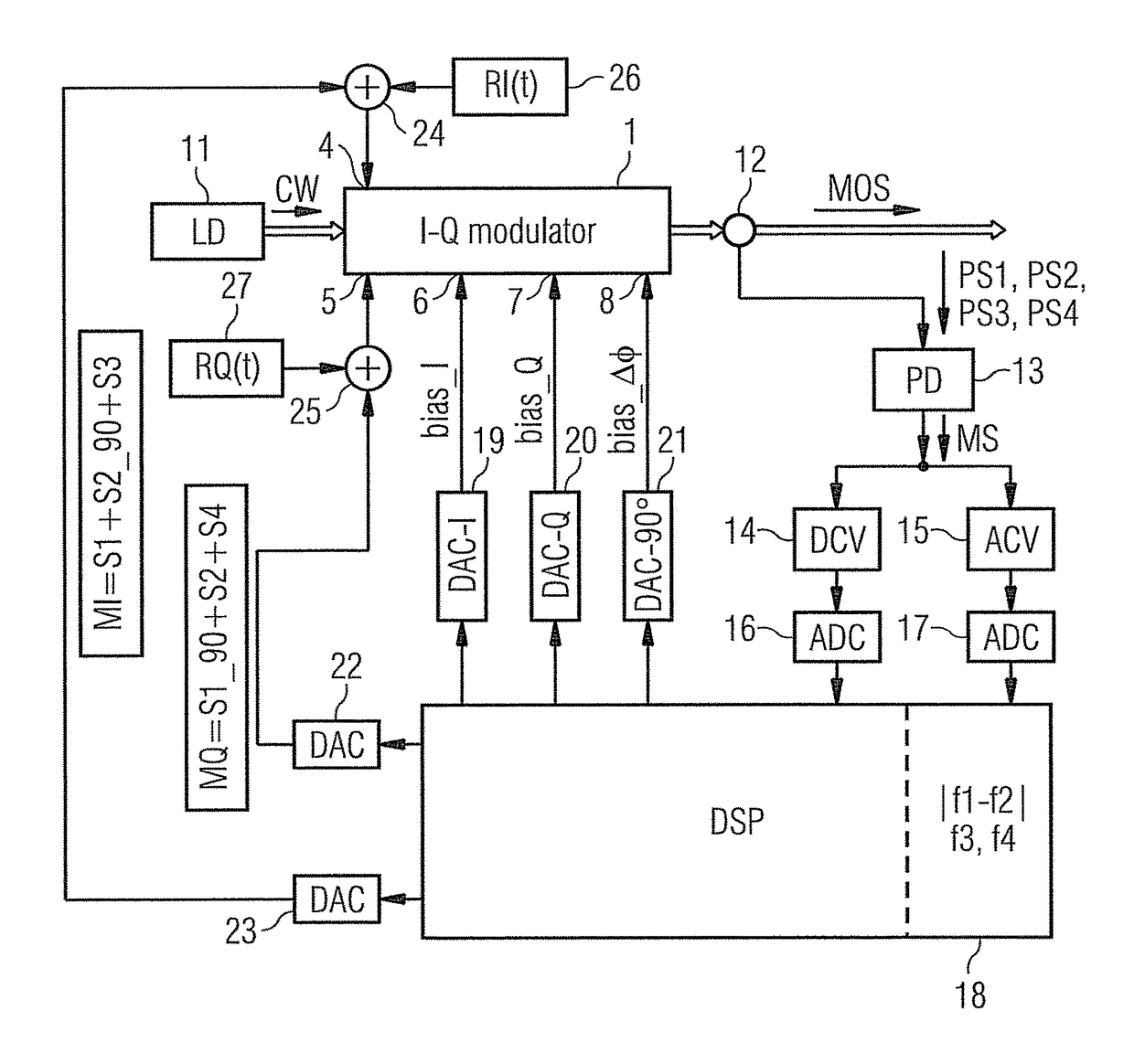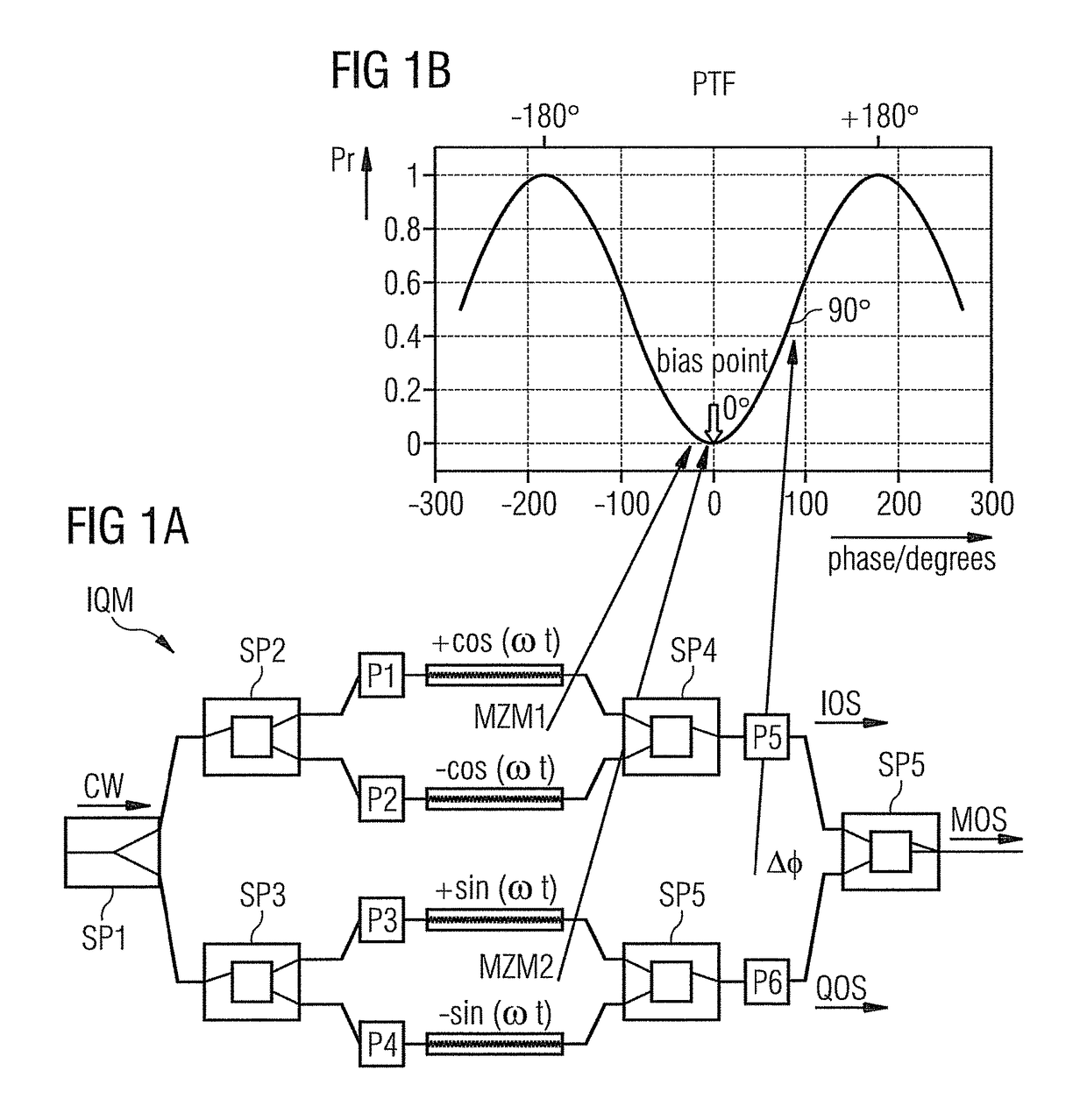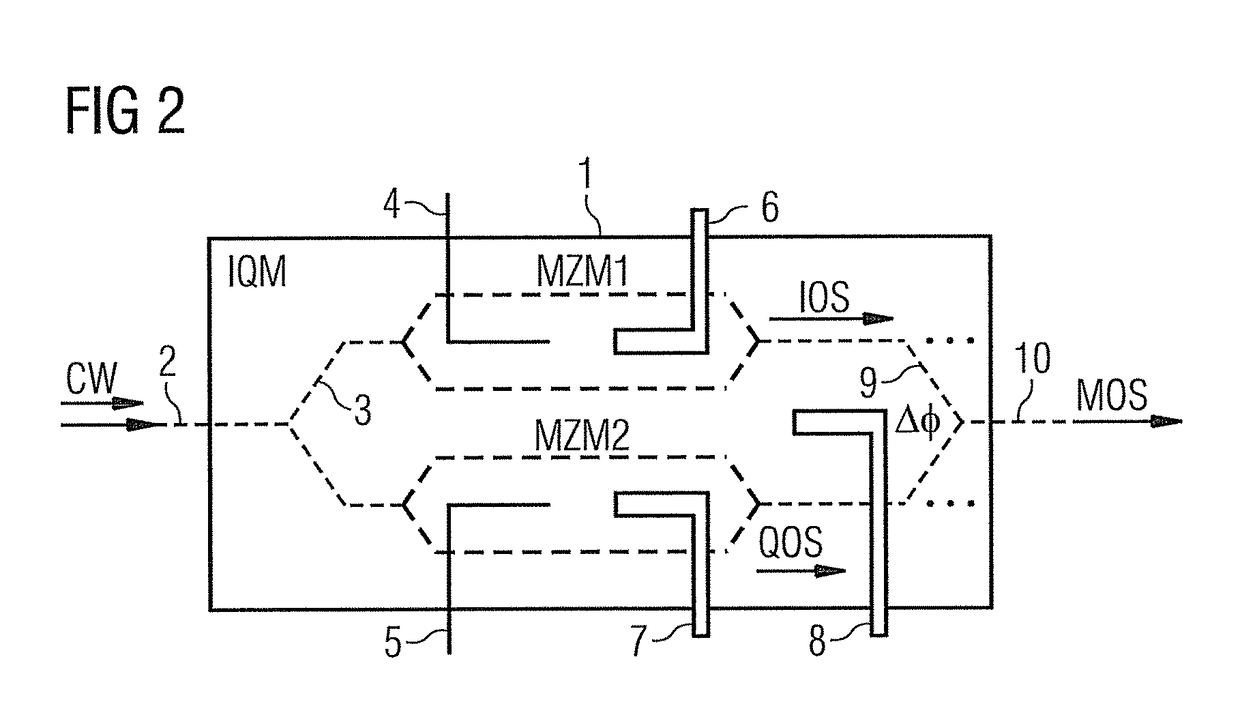Optical IQ modulator control
a technology of optical iq modulator and control arrangement, applied in the direction of digital transmission, transmission path sub-channel allocation, instruments, etc., can solve the problems of low noise monitor signal, implementation but has some severe disadvantages with respect to single sideband modulation
- Summary
- Abstract
- Description
- Claims
- Application Information
AI Technical Summary
Benefits of technology
Problems solved by technology
Method used
Image
Examples
second embodiment
[0084]The second embodiment depicted in FIG. 4 uses a different kind of optical pilot signals PM1, PM2. These pilot signals are generated by electrical pilot modulation signals SM1, SM2 with a basic modulation frequency fco carrying different additional AF (audio frequency) carrier modulation signals M1, M2 with “carrier modulation frequencies” f1 and f2 (e.g. again f1=1.41 kHz, f2=1 kHz). The (electrical) modulation signals may even have identical basic modulation frequencies fco and generate therefore the pilot signals PM1 and PM2 with an optical first basic frequency fcw+fco and an optical second basic frequency fcw−fco also additional modulated by f1 and f2 respectively. ASK modulation or, with higher expenditure, each kind of “pilot signal modulation” may be used for the pilot signals. In FIG. 6 are only the relative basis frequency positions −fco and +fco of these modulated pilot signals indicated to avoid a confusing number of signals.
[0085]Corresponding to the embodiment of ...
first embodiment
[0087]Hence, the standardized combined modulation signals MI and MQ (neglecting the amplitudes) for the first embodiment according FIG. 3 are
MI(t)=sin(2πf1*t)+cos(2πf2*t)+sin(2πf3*t)=S1+S2_90+S3;
MQ(t)=cos(2πf1*t)+sin(2πf2*t)+sin(2πf4*t)=S1_90+S2+S4.
[0088]The standardized combined modulation signals MI and MQ for the second embodiment using modulated pilot signals PM1, PM2 according FIG. 4 depend on the modulation format (neglecting the amplitudes) e.g. for ASK modulation with carrier modulation signals
M1=sin(2πf1*t) and M2=sin(2πf2*t):
MI(t)=sin(2πfc*t)*sin(2πf1*t)+cos(2πfc*t)*sin(2πf2*t)+sin(2πf3*t)=SM1+SM2_90+S3;
MQ(t)=cos(2πfc*t)*sin(2πf1*t)+sin(2πfc*t)*sin(2πf2*t)+sin(2πf4*t)=SM1_90+SM2+S4;
[0089]Power control signals CS3, CS4 (shown before adjustment as dashed lines in FIGS. 5 and 7) are derived from the further pilot signals PS3, PS4 and the phase shifters P1, P2 and P3, P4 are controlled by associated PTF bias (control) signals bias_I and bias_Q respectively till the output powe...
PUM
| Property | Measurement | Unit |
|---|---|---|
| frequency | aaaaa | aaaaa |
| RI | aaaaa | aaaaa |
| RI | aaaaa | aaaaa |
Abstract
Description
Claims
Application Information
 Login to View More
Login to View More - R&D
- Intellectual Property
- Life Sciences
- Materials
- Tech Scout
- Unparalleled Data Quality
- Higher Quality Content
- 60% Fewer Hallucinations
Browse by: Latest US Patents, China's latest patents, Technical Efficacy Thesaurus, Application Domain, Technology Topic, Popular Technical Reports.
© 2025 PatSnap. All rights reserved.Legal|Privacy policy|Modern Slavery Act Transparency Statement|Sitemap|About US| Contact US: help@patsnap.com



